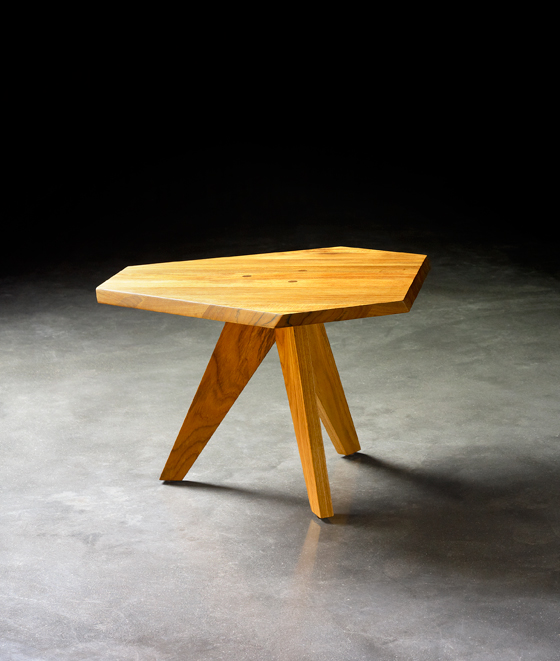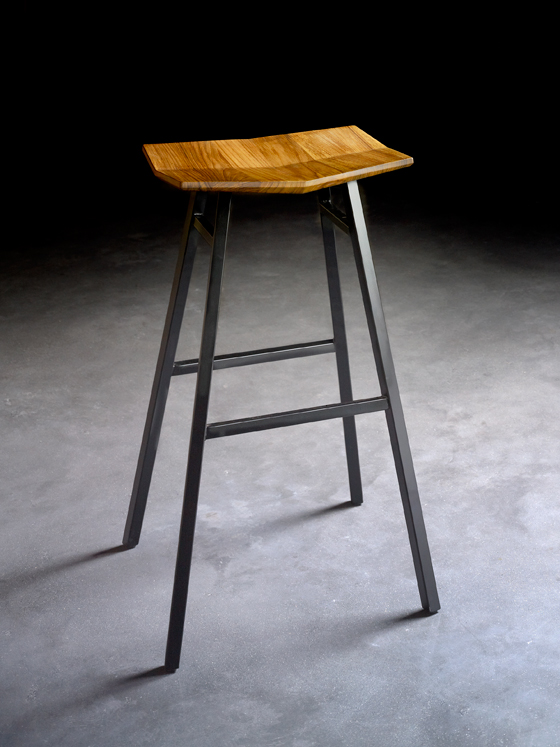The Measure of Success: INCH Furniture
Texto por Simon Keane-Cowell
Zürich, Suiza
26.05.10
Architonic talks to Basel-based design label INCH Furniture about their distinctive collection for the Swiss Pavilion at Shanghai's Expo 2010
Shanghai. Have you been yet? With the Chinese boom-metropolis currently hosting Expo 2010, offering architourists an (at times embarrassing) embarrassment of architectural statements by over 200 countries, now is the time to go. For a furniture designer to be commissioned to create the seating for their nation's expo pavilion is a once-in-a-lifetime opportunity. Design duo Thomas Wütrich and Yves Raschle, aka INCH Furniture, were lucky enough to receive such an opportunity when Swiss Pavilion Architects Buchner Bruendler invited them to design a furniture collection for the project. The result is a series of sublime pieces, whose considered, sober beauty looks set to make them contemporary classics.
Architonic met up with INCH at this year's Salone del Mobile in Milan to discuss their Shanghai project.
Swiss furniture-design duo Thomas Wütrich and Yves Raschle, aka INCH Furniture: 'It’s important for us that our design work is contemporary, but that it’s not trendy'; photo Christian Knörr

Swiss furniture-design duo Thomas Wütrich and Yves Raschle, aka INCH Furniture: 'It’s important for us that our design work is contemporary, but that it’s not trendy'; photo Christian Knörr
×.....
How did you receive the commission to design the furniture for the Swiss Pavilion?
The main topic of the Swiss Pavilion is sustainability. The overall topic is ‘Better City, Better Life’, and within that Switzerland talks about the contrast between city and nature. So, sustainability was one of the criteria when the architects, Buchner Bruendler, were looking for designers. The second was that the designers must be Swiss. Add to this that our furniture is produced in Indonesia – that is, also in Asia – and we'd hit the nail on the head.
What was the process of working with the architects like?
We knew them before, so it was a personal kind of relationship. We met them every couple of weeks and they would talk a lot about their vision, which was very important, about how the pavilion should look architecturally. They knew and liked our furniture, so we started looking for the right answer furnishing-wise to the pavilion. It was a very personal, yet very enriching, conversation that we had with the architects.
'Shanghai Chair' von INCH Furniture; Foto Mark Niedermann
It doesn’t happen very often that designers and architects have that close of a relationship, where they are both defining a space – architects using structure to define a space, with designers responding to that structure and also helping to define the way the space is experienced.
Well, it was more common years ago. Architects made a house and then furniture was designed specifically for it. It's a pity that it doesn't happen so often these days, because every architectural project is furnished at the end, so if it’s a collaborative project it can work out really well for both architects and designers.
'Shanghai Lounge Chair' by INCH Furniture; photo Mark Niedermann
And normally it’s architects, who, wanting to retain complete creative control, decide they will design their own furniture for a specific project. ‘I've designed this building. Now I'm going to design the furniture for it.’
Buchner Bruendler were great because they said from the start, ‘We are not designers. We are architects.’ Furniture design is a profession in itself. It's not that architects don’t sometimes design good furniture. But there is often a misunderstanding of the design profession there.
Architects can, indeed, create successful furniture designs. I’m sometimes not so sure about their graphic skills, though...
We're not graphic designers either. (Laughs.) We work with Ludovic Balland, who works for Vitra and who’s just done a book for Herzog & de Meuron. He does all our graphic work.
'Shanghai Lounge Chair' by INCH Furniture in situ at the Buchner Bruendler-designed Swiss Pavilion in Shanghai; photo Mark Niedermann

'Shanghai Lounge Chair' by INCH Furniture in situ at the Buchner Bruendler-designed Swiss Pavilion in Shanghai; photo Mark Niedermann
×Which features some beautiful typography. Very Swiss.
Thank you. He’s a master of that.
It fits so well with the idea of the pavilion presenting Switzerland to the world. And, obviously, your furniture fits beautifully into that. And into the great tradition of furniture designed specifically for such events. I'm thinking of Mies van der Rohe's 'Barcelona Chair' and the Robin Day and Ernest Race's furniture for the 1951 Festival of Britain.
And in Switzerland we have the 'Landistuhl' designed for the 1939 Swiss National Exhibition by Coray.
What was the design process like for the Shanghai collection? How much of an input did the architects have?
Well, we are a bit old-school when it comes to designing. We don’t work with visualisation, we work with models. We started with 1:5 models, which is what we always do. And we developed a lot of models for this collection. We were always asking ourselves questions like 'What kind of guests are sitting there?' and 'What kind of impression or feeling should they have of Switzerland?' The architects’ vision was a very important influence, because they knew much more about the expo and the expo ideas than we did.
'Shanghai Lounge Table' by INCH Furniture; photo Mark Niedermann
What about the production side of things? How did you start working with your producer in Indonesia and how closely do you work with them?
Well, our company name comes from ‘IN’ for Indonesia and ‘CH’ for Switzerland. Our name is our programme, basically. We didn’t go and search out a cheap producer, but, rather, Yves and I were living and working in Borneo for an NGO. We fell in love with the people and the language. We saw the skills that are there, especially their woodworking. We were sad when we had to go back to Switzerland after our jobs were over. So, five years ago, we started up our firm, INCH Furniture. We went to a carpentry school in Java where they make the best-quality furniture in Indonesia. It's very time-consuming and not at all mass-production. They were really open: ‘OK. That’s not easy,’ they said. And so we started to produce with them. It's the master-craftsmen attached to the school, who work with us, not the students. What's great is that the money they earn goes to fund the school.
'Shanghai Bar Stool' by INCH Furniture; photo Mark Niedermann
The form of the chairs in the collection are stunning. Very geometric. The joints are magical.
Thank you. Especially with the 'Shanghai Chair'. There are a lot of joints there that we paid a great deal of attention to.
You get a real sense of craft and virtuosity, which is particularly relevant now. When you come to somewhere like Milan…
There's so much plastic.
…Well, just a huge amount of new products being presented. If anything is going to make us hold on to objects and not throw them away, to have an emotional relationship with them, then it’s something that displays its value.
This isn’t cheap furniture. It’s made to last. It’s important for us that our design work is contemporary, but that it’s not trendy. Sustainability is not just about the wood or where the production happens; it's also about design that's able to survive.
Along the lines of Dieter Rams's work, which strove to reject the concept of visual obsolescence, or Tom Dixon’s consciously non-fashionable work that he's made of late.
Exactly. Design for a long life.
Thomas and Yves, thanks very much.
.....









